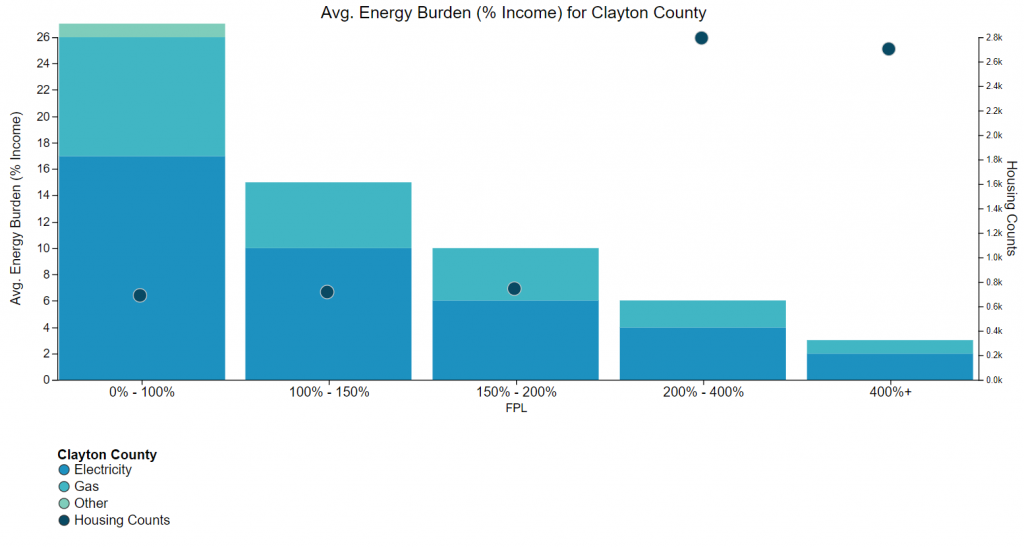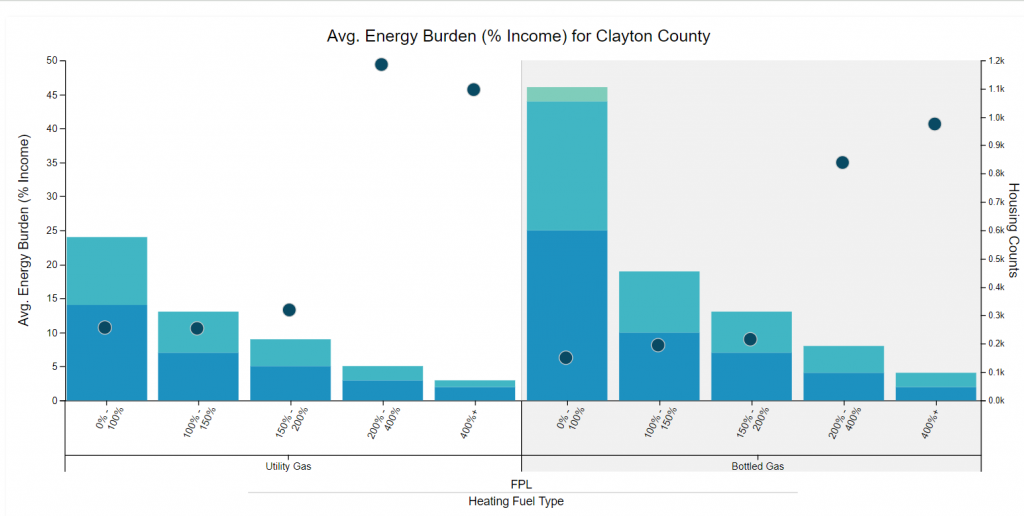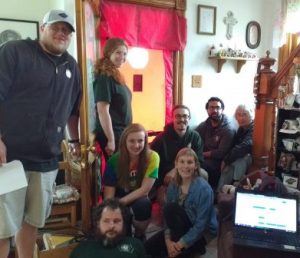This is the third in a GivingCompass.org series about the opportunities and impacts of the Clean Energy District movement in Iowa and the Upper Midwest. Giving Compass serves as a trusted platform to help individual donors learn about issues, get involved, and give with impact.
This article is by Joleen Jansen, Clayton County Energy District Director
Clean Energy Districts (CED) are socioeconomically and geographically inclusive and local. A Just Transition must include everyone, especially those often left behind. CED’s are transforming the structure of the vast and powerful energy system by working at the household and community levels.
Let’s begin with “Just” Questions:
Think about the determining factors of where you will purchase and enjoy your next pizza… Likely, the pizza cost, the type, the location, and the pizza maker themselves will figure into your decision.
But what determines where you will purchase the energy needed to power, heat, and cool your home? Your residential address –and nothing else– defines the source of an essential kilowatt of power or therm of heat! If you want to shop for energy, your only choice is to consider moving.
Public utilities are regulated monopolies with predefined service areas. This system controls the unit price of electricity and gas. While energy consumption is necessary to live in modern society, most folks have zero power over how much their power will cost. When it comes to buying pizza, we have lots of liberty but with vital energy, not so much. And when it comes to those with the thinnest of financial resources, the injustice is the loudest. As a percentage of income, the poorest among us pay the most for their energy, meaning for many rural Iowans, utility bills are burdensome.
Energy burden= annual utility bills ÷ annual income | A high energy burden is considered 6% or more
Nonprofit clean energy districts strengthen the county of location by leading, implementing, and accelerating the inclusive, locally-owned transition to clean energy. CED champions teach and implement the good news, “when we all spend less on our utility bills, we all have more for our pocketbooks and, in turn, create stronger communities.” If the transition to clean energy is not inclusive and leaves many behind, our communities will become weaker, not stronger.
Clayton County, in northeast Iowa, is rural with a population of 17,600. The average energy burden for Iowans is 3% and the Clayton County residential average is two ticks higher at 5%. But this doesn’t reflect the truly oppressive picture for the county’s low-income earners.
According to the US Department of Energy’s Low-income Energy Affordability Data (LEAD) tool, nearly 10% of 7,600 Clayton County households live at or below the Federal Poverty Line. These households have a whopping energy burden of 26%! As incomes go up, the energy burden declines. This is proven by the fact that 2,700 households earning more than 400% above the poverty line have an energy burden of only 3% (see figure below).

63% of Clayton County households have high energy burden ranging from 7- 26%. This dire situation is a combination of lower average household incomes and higher energy costs, especially because so many rural residents are forced to rely on costly bottled gas or propane versus more affordable utility-supplied methane (natural) gas (see figure below). These figures do not include money spent on transportation energy, which is naturally higher for rural residents who often commute long distances.

 Clean energy districts work in numerous ways to reduce household energy burden. The CED’s First Step Home Efficiency program partners with Green Iowa AmeriCorps to target disadvantaged households with unbiased, high-caliber energy assessment sessions that work. These sessions test combustion safety and air leakage, conduct whole-home LED upgrades and air sealing, and complete water-saving device installations. After, a report is provided with savings and a plan for the next, more significant energy savings steps like solar and geothermal energy. In Clayton County, over 150 households have received the free service resulting in $16,238 in total audited household energy savings/yr.
Clean energy districts work in numerous ways to reduce household energy burden. The CED’s First Step Home Efficiency program partners with Green Iowa AmeriCorps to target disadvantaged households with unbiased, high-caliber energy assessment sessions that work. These sessions test combustion safety and air leakage, conduct whole-home LED upgrades and air sealing, and complete water-saving device installations. After, a report is provided with savings and a plan for the next, more significant energy savings steps like solar and geothermal energy. In Clayton County, over 150 households have received the free service resulting in $16,238 in total audited household energy savings/yr.
While we focus the clean energy programs toward individuals, CED’s also work on the unjust structural aspects of the energy system that are weakening our communities. Remember, we might choose our pizza source, but we are captives of the monopoly energy system. CED’s transform this giant wealth extraction system into a locally-owned wealth creation system.
Consumer-owned utilities are important assets in this process. CED’s are in action with the municipal electric utilities and rural electric cooperatives, leading programs ranging from energy efficiency, consumer-owned solar, community solar, and inclusive beneficial electrification. We think consumer-owned municipalization should be an option for communities everywhere.
 While addressing energy burden at the grassroots level and pursuing local ownership of energy systems, energy districts are achieving just solutions for our communities. For example, CED’s teach our churches, schools, and town leaders that solar powering energy-efficient buildings reduce energy costs; this action, in turn, frees limited financial resources for their community-strengthening mission. We also show local leaders how electric vehicle charging infrastructure bolsters the local tourism sector and is needed for rural drivers to transition to less costly electric vehicle transportation.
While addressing energy burden at the grassroots level and pursuing local ownership of energy systems, energy districts are achieving just solutions for our communities. For example, CED’s teach our churches, schools, and town leaders that solar powering energy-efficient buildings reduce energy costs; this action, in turn, frees limited financial resources for their community-strengthening mission. We also show local leaders how electric vehicle charging infrastructure bolsters the local tourism sector and is needed for rural drivers to transition to less costly electric vehicle transportation.
Now, as we crawl out of a devastating worldwide pandemic, Clean Energy Districts are needed to implement inclusive community-strengthening programs. When local champions aim the clean energy district mission towards those left behind, and toward transforming the structure of the vast and powerful energy system, our communities become stronger and accelerate the Just Transition to clean energy.
